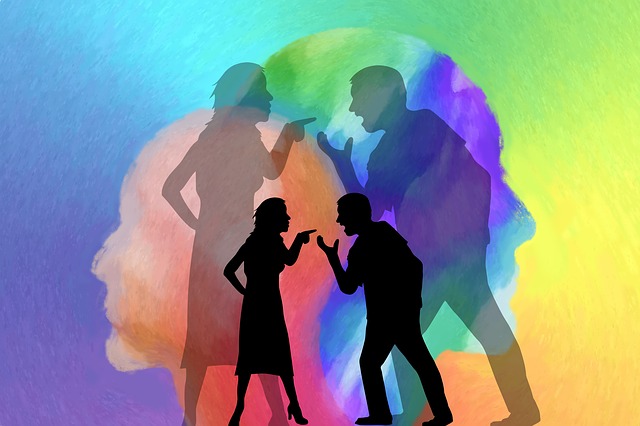Mark Walsh, Founder of the Embodiment Conference, facilitated a panel discussion at the Conference with five eminent presenters – Peter Levine, Gabor Maté, Richard Schwartz, Dan Siegel and Alanis Morissette. The focus of the panel discussion was trauma – its nature, bodily manifestations and healing capacity. While each of the panel members approached the interviewer’s questions from their own lived experience, perspectives and frameworks, there was remarkable agreement and cross fertilisation in their discussions.
Initially, the panel led by Mark Walsh explored the nature of trauma. While the participants used different words and analogies to explain trauma there was agreement that trauma is not the initiating event (such as death of a parent, sexual abuse or abandonment in childhood) that leads to a traumatic response but rather the impact on the mind and body and the residual effects of the traumatic event such as heightened sensitivity to triggers, that can have a lifelong effect on quality of life and overall wellbeing.
Gabor, who experienced the traumatic events of the Holocaust as a child, mentioned a comment made to him by Edith Eger, who herself survived the Holocaust. Edith, author of The Gift: 12 Lessons to Save Your Life, told Gabor that he would never get over the Holocaust experiences but reinforced the view that what changes with “inner work” is how you relate to the trauma – as Gabor said, “you can’t undo what has been done”. On one occasion, Bessel van der Kolk, who integrates science with trauma healing, told Gabor, “You will have to keep Auschwitz with you wherever you go” – reinforcing the lifelong impacts and ever-present trigger sensitivity of trauma.
The embodiment of trauma
Each of the panel members in their own words reinforced the view that the impact of trauma is not isolated to the mind alone but is also embedded in the body – in the process, highlighting the theme of the conference. Peter Levine emphasised the influence of temperament on the impact of trauma and its embodiment. He maintained that trauma leads to fragmentation or suppression of our life energy, of “our living, vital body” – resulting in the incapacity to “be with the here-and-now”. Richard Schwartz argues that trauma “screws up” the body’s “message board” – the sensory information from the intelligent gut and heart is distorted and amplified in the brain stem, resulting in an overriding of rational thought and natural instinct.
Dan Siegel maintained that the embodiment of trauma would be reflected in adverse impacts on the five “molecular mechanisms” of a healthy body and manifest as:
- Elevated levels of cortisol, the stress hormone
- Impairment of the body’s ability to fight infection
- Adverse impacts on the cardio-vascular system
- Increase in inflammation
- Shortening of telomeres, resulting in acceleration of the aging process.
Gabor in his book, In the Realm of Ghosts: Close Encounters with Addiction, has highlighted the role that trauma plays in the development of addiction and diseases of all kinds. His colleague, Bessel van der Kolk, documents the multi-dimensional impacts of trauma, including its embodiment, in his book, The Body Keeps the Score: Mind, Brain and Body in the Transformation of Trauma.
Healing trauma through the body
Given the life-long impacts of trauma and its pervasive, adverse impacts on body, brain and mind, the question arises , “How do we heal trauma?” While the panel members responses differed in terms of specific processes, there was considerable agreement that healing required fully facing the trauma, its origins and its emotional/behavioural/physical manifestations. It also involves avoiding addiction – which is an ineffectual approach to pain alleviation. There was also agreement that the process of healing is aided immeasurably by the assistance of a supportive, compassionate person, whether that be a trained therapist or someone who is trauma-informed and caring. Gabor mentioned that one of his teachers maintained that people will only be open to the truth “when compassion is present”.
Alanis stated that she had a “juicy tool kit” to help her deal with her inner landscape and associated dialogue. She talked about having a “safe, non-judgmental listener”; a therapist (who kept her alive); movement such as performing on stage; writing songs (which proved to be cathartic when she expressed her real feelings); exposure to sun and water; and her mindfulness practices. She suggested that her “trauma recovery journey” requires her to employ the courage she uses in her writings to “break open the armour” that interferes with her relationships. Alanis identified active pursuit of relationships and management of the attendant vulnerability, instead of avoidance, as her way forward.
Richard Schwartz, founder of the Internal Family Systems (IFS) and author of No Bad Parts: Healing Trauma and Restoring Wholeness, maintains that our brains involve many “parts” necessary for day-to-day functioning and this is normal. However, with trauma, these parts become fragmented and frozen in an unhealthy, disconnected state. The process of healing involves re-integration of the parts by being curious and open to the hurtful parts that have been locked away. His approach involves engaging an “open-hearted therapist” in the process of revisiting the traumatic event – going into the scene and dealing with the traumatic event, for example, taking the child away from an abuser to a “safe and comfortable place”. Richard’s transformative psychotherapy approach promotes inner harmony and enhances self-compassion so that the “inner critic” does not take hold and dominate a person’s perspective and outlook on life.
I have previously discussed Gabor’s approach to healing trauma and addiction which he describes as “compassionate inquiry”. Gabor reinforced the view that compassion (for ourselves, others and the world at large) is the “healing ingredient”. He argued that we have to adopt a curiosity about everything and everybody so that we enrich our understanding and build healthy relationships. He suggested that our compassion should extend even to people we dislike or detest because underlying their words and actions is “some hurt”. He reminds us that given trauma is about what happens inside us, not the precipitating external events, we are always able to access our hurt and achieve healing – we can change our relationship to the trauma and restore our connectedness.
Peter Levine, creator of Somatic Experiencing and author of Healing Trauma, describes his pioneering program as a move away from “talk” therapies to a focus on restoring the wisdom of the body. In the panel discussion, he described an example of a somatic intervention in terms of helping someone to recognise the source of their trauma by having them explore their back pain – the level of tension, the location of the pain (left or right) and the movement the spine wanted to do. In the process the pain dissolved when the person involved recognised the source of the bodily trauma as a time as an Army doctor when he fell off a truck onto his back when everyone else in the truck was killed by the enemy. Peter explained that the body remembers but we may not be able to recall the event and its adverse impacts. However, through Peter’s processes of somatic experiencing, including relaxation techniques, a person can eventually remember what happened to them and for them and bring this to conscious awareness. Peter indicated that this realisation may be accompanied by trembling and other physical manifestations of release that he describes as the “resetting of the central nervous system”.
Dan Siegel sees trauma healing as moving from “impairment to integration”. He reinforced the view that through the “internal work”, described by other panel members, you actually “shift the process” and that enables bringing together the many differentiated and fragmented elements of mind and body. So in his view trauma healing is “integrative”. He suggested that the pandemic is an opportunity and a stimulus to a different way of living socially and culturally so that we focus on our connectedness, not our separateness.
Reflection
Dan referred to Alanis’ latest album, Such Pretty Forks in the Road, as a means of healing in that it enables the listener “to hold in awareness things that almost seem paradoxical” – the words and rhythms moving in different directions. He sees these songs, along with the processes employed by Peter, Gabor, and Richard as “incredibly healing”. Alanis also contributes to trauma healing, recovery and wholeness through her podcast where she interviews leading developmental experts to bring increasing insight into the nature of trauma, addiction and healing.
Each of the panel members are proponents of the practice of mindfulness in its many forms. They recognise that as we grow in mindfulness, we increase our self-awareness, develop emotional regulation and heighten our compassion (for ourselves and others). Somatic meditation, for example, has been used extensively in trauma healing.
________________________________
Image by Gerd Altmann from Pixabay
By Ron Passfield – Copyright (Creative Commons license, Attribution–Non Commercial–No Derivatives)
Disclosure: If you purchase a product through this site, I may earn a commission which will help to pay for the site, the associated Meetup group, and the resources to support the blog.




